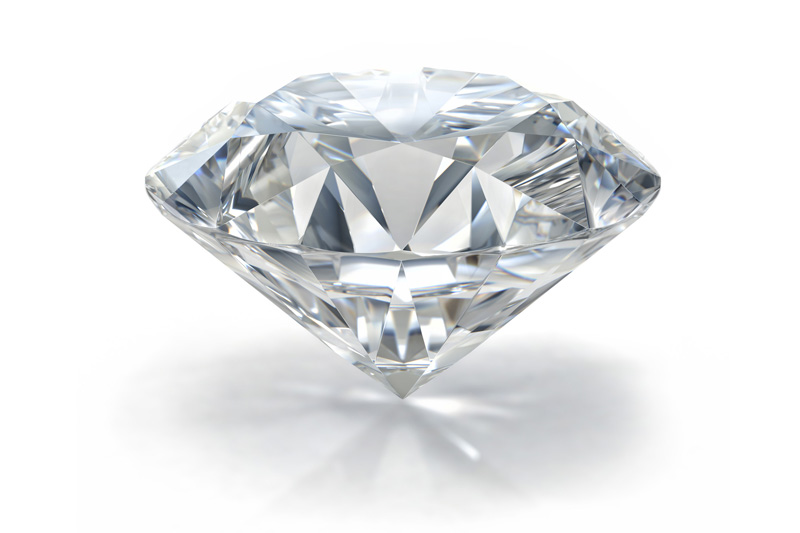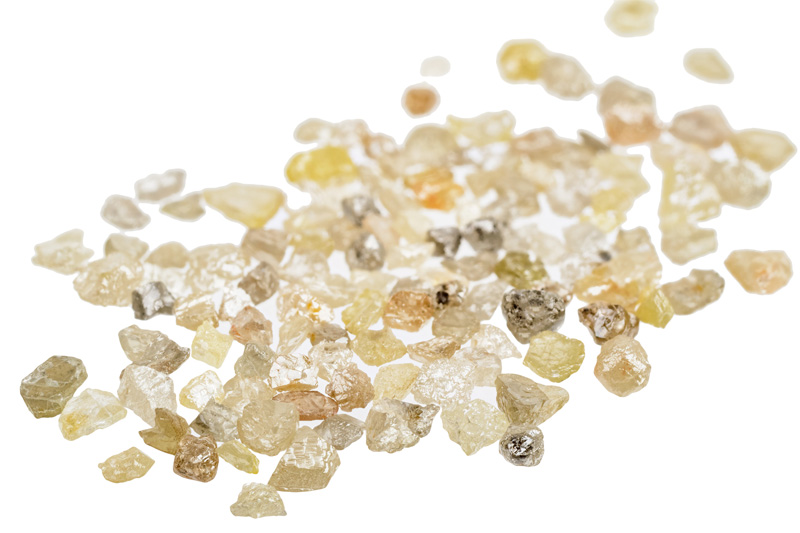

PHYSICAL PROPERTIES
- GROUP Native elements
- COMPOSITION C
- COLOR From white to black, colorless, yellow, pink, red, blue, brown
- CRYSTALLINE SYSTEM Cubic
- CRYSTALLINE HABIT Octahedral, cubic
- HARDNESS 10
- FRACTURE Conchoidal
- EXFOLIATION Perfect, octahedral
- GLOSS Adamantine
- SCRATCH It will scratch the scratch board
- TRANSPARENCY From transparent to opaque
- SPECIFIC GRAVITY 3.4 - 3.5
- REFRACTIVE INDEX 2.42
MINERALOGICAL CHARACTERISTICS
The diamond is the hardest mineral on Earth. Its great hardness is due to the unique distribution and composition of its carbon atoms.
The name of diamond comes from the Greek "adamus", which means "catch" or "submit", referring to its great hardness. We usually find it in the form of octahedral, rhombododecahedral and cube crystals. The color varies from colorless to black, with brown and yellow being the most common. Colorless or light blue diamonds are the most used in jewelry, and red, green, orange and violet are the rarest and most valued.
Most of the diamonds come from two types of volcanic rocks: lamproite and kimberlite. They can also be found in placers and in clusters.
Deposits: Brazil, India, Botswana, Australia, Russia, Congo and Angola.
THERAPEUTIC PROPERTIES
The diamond is associated with purity and clarity. It is a symbol of commitment and fidelity and helps to establish bonds. Since ancient times, it is considered the bearer of wealth and abundance. On a spiritual level, it is considered a high vibration stone, activating the 7th chakra. It favors the cleaning of the aura, the connection with the divine light and spiritual evolution.
The diamond is considered an amplifier of energy, enhancing the energy of anything with which it is used. get in touch. Among other qualities, it is said that it brings courage, tenacity, vitality, strength, balance, creativity, joy, dynamism, longevity, altruism and liberation.


